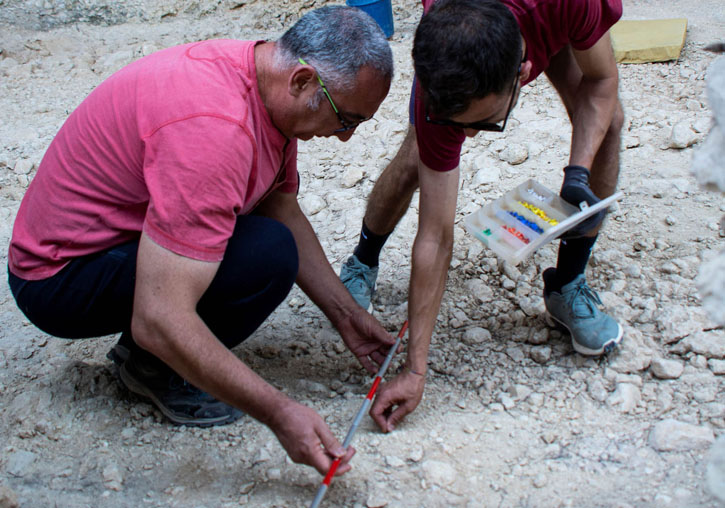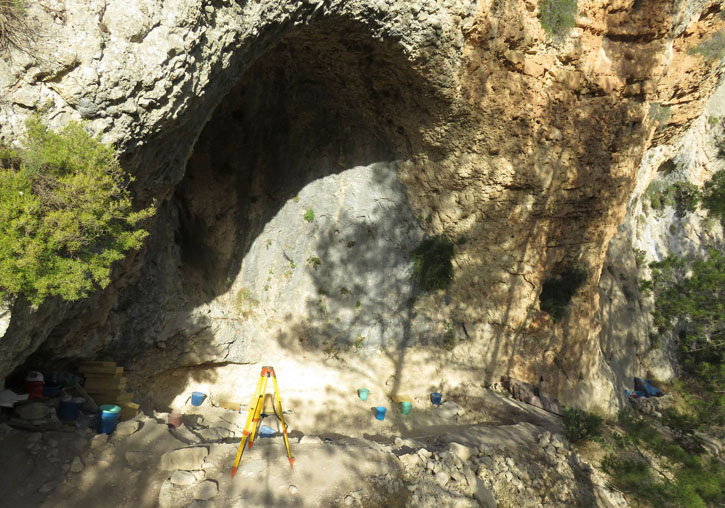
A research by six scientific institutions in the Abric del Pastor of Alcoi, including the universities of Valencia (UV) and Alicante (UV), has managed, through an interdisciplinary approach, to characterise a moment in the life of a Neanderthal group. This research has reduced the palimpsest effect (superimposition of multiple occupation episodes on the same surface over a long period of time) to a time resolution very close to the life of said group. The work has been published in the journal Scientific Reports, of the Nature group.
“Having achieved it in the Abric del Pastor is due to the low density of the archaeological record and a multidisciplinary scientific approach”, explains Santiago Sossa Ríos, researcher at the Department of Prehistory, Archaeology and Ancient History of the University of Valencia and first signatory of the paper.
Specifically, this study has revealed what activities the same group carried out and, through 11 stone pieces, 78 fauna remains and a bonfire, sheds light on their spatial behaviour (activity around the fire) and on the activities carried out (stone carving and butchery of appendicular parts of a single deer).
“If we manage to continue with this approach, we will have a closer reconstruction of human realities in the past. Until now, most studies on Neanderthals approached their materials from the stratigraphic unit, formed over hundreds or thousands of years, which generates a mixed and homogeneous view of their behaviour”, explains Santiago Sossa Ríos.
“Although other high-resolution units have been isolated both in the Abric del Pastor and in other sites, the unit isolated and characterised in this work and that represents this group is perhaps the closest photo we have of Neanderthals and their daily life”, continues Sossa Ríos.
In addition, they suggest that the mobility of this group was a maximum of between three and five kilometres, unlike other flint remains from the same site that suggest a movement of other groups of between 25 and 30 kilometres.
With these data, the authors delve into a key debate such as the formation of archaeological sites. In this sense, they open the possibility that the sites with the greatest number of remains and, therefore, most affected by the palimpsest effect, are formed by the repetition of this type of short occupations and with little material record.
In addition to the UV and the UA, the University of La Laguna, the Catalan Institute of Human Paleoecology and Social Evolution (IPHES-CERCA) and the Rovira i Virgili University participate in the research. On behalf of the University of Valencia, also the researchers Mariel Bencomo and Leopoldo Pérez.
The Abric del Pastor is a shelter located at an altitude of 820 metres, in the Serra de Mariola, in a steep area, on the right bank of the Barranc del Cint.
Article: Sossa-Ríos, S., Mayor, A., Hernández, C.M. et al. «Multidisciplinary evidence of an isolated Neanderthal occupation in Abric del Pastor (Alcoi, Iberian Peninsula)». Sci Rep 12, 15883 (2022). https://doi.org/10.1038/s41598-022-20200-z
Annex photo caption:
- The Abric del Pastor, in Alcoi. Photo: Sven Kleinhapl.
Images:













